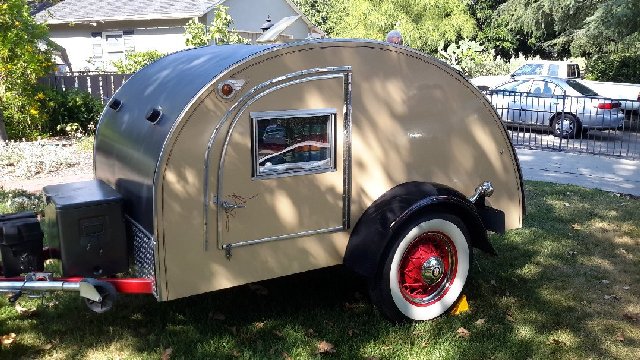Big day of welding.
Karl was pretty whooped from a big railing install yesterday, so after he helped me get the main frame box up on to the saw horses he cut out and left me to my own devices.
Here you can see how the corner weld inside the rear of the frame tubes prevents the stabilizer plates from fitting up tight.

Need to nip the corner of the plates a little on the sander to get them to snuggle up nicely. Also, as nice as the suspension parts are, they still have little nubs from where the laser cuts started and stopped, and some flaring at the edges of the bends. So a pile of parts (on left side of sander stand) needed to be run thru the Bader.

Here is a before and after of the rear shackle hangers. Although the pic is a little blurry, you can still see where I have removed the flare on the edges of the bends and ever so slightly rounded the corner of the angle cut.

And here is the pile of parts a few minutes later.

In this pic of the shackles you can see how I have sanded off all of the little serrated waves and scale from the laser cut, and chamfered the edges slightly.

And here you can see how knocking the inside corner off of the stabilizer plate has allowed it to snuggle up to the inside of the frame rail and rear xmbr.
Frame upside down, street side shown

Curb side

Pay no attention to the man behind the welding hood.

Street side Stabilizer Plate welded in from the bottom.

Curb side

Getting the weld all the way into the corner is a little tricky. You need to get the welding torch cup and filler wire all crammed in there and still need to be able to see the puddle at the same time...all w/o letting the molten blob of filler jump onto the tungsten electrode.
With that done I moved on to welding the intermediate xmbr's, but was having a little trouble with the vertical welds puddling out, so I decided to flip the frame up on its side to get the weld into the horizontal position.
Here's 'The Flux Capacitor'.

Karl lives in a residential neighborhood with single phase electrical power, only. Many of the industrial and commercial pieces of equipment he has, including the lifting hoists, require 3 phase power of various voltages. The Flux Capacitor is a 2-1/2 HP 3 phase motor and some transformer banks. By running the 3 ph motor off of single phase power you can pick up the other two phases that are generated from the motor, transform that to the voltage required and convert to the input power needed (at least that's how this non-electrically minded person understands it).
Bottom line is, in order to use the hoist you need to plug in the appropriate twist lock cord and 'push the green button'...Max.
Here I am flipping the frame up on its side.


I wasn't too sure if the frame would try to slide off of the horses during the flip, and being by myself I took the precaution of clamping some stock on either side of the frame rail to act as stop blocks. The center clamp was added once the frame was up on edge, just to keep things stable due to the dwell effect. (If I had the hoist cinched up tight the frame was light on the horses and wanted to move around; once I let off the hoist enough to put some weight back on the horses the frame wanted to flop a little one way or the other back onto the hoist. The clamps stabilized everything and the hoist strap was left on just in case.)

Here are a bunch of pics of the intermediate xmbr welds done in the flat this way. Note that all of the corners were wrapped. The power of TIG.




More...








 Not just some iron stuck together eh !!!
Not just some iron stuck together eh !!! 




 ) you guys are all so pushy about your pic quotas (mock whining
) you guys are all so pushy about your pic quotas (mock whining  ).
). ).
).


 ).
).


